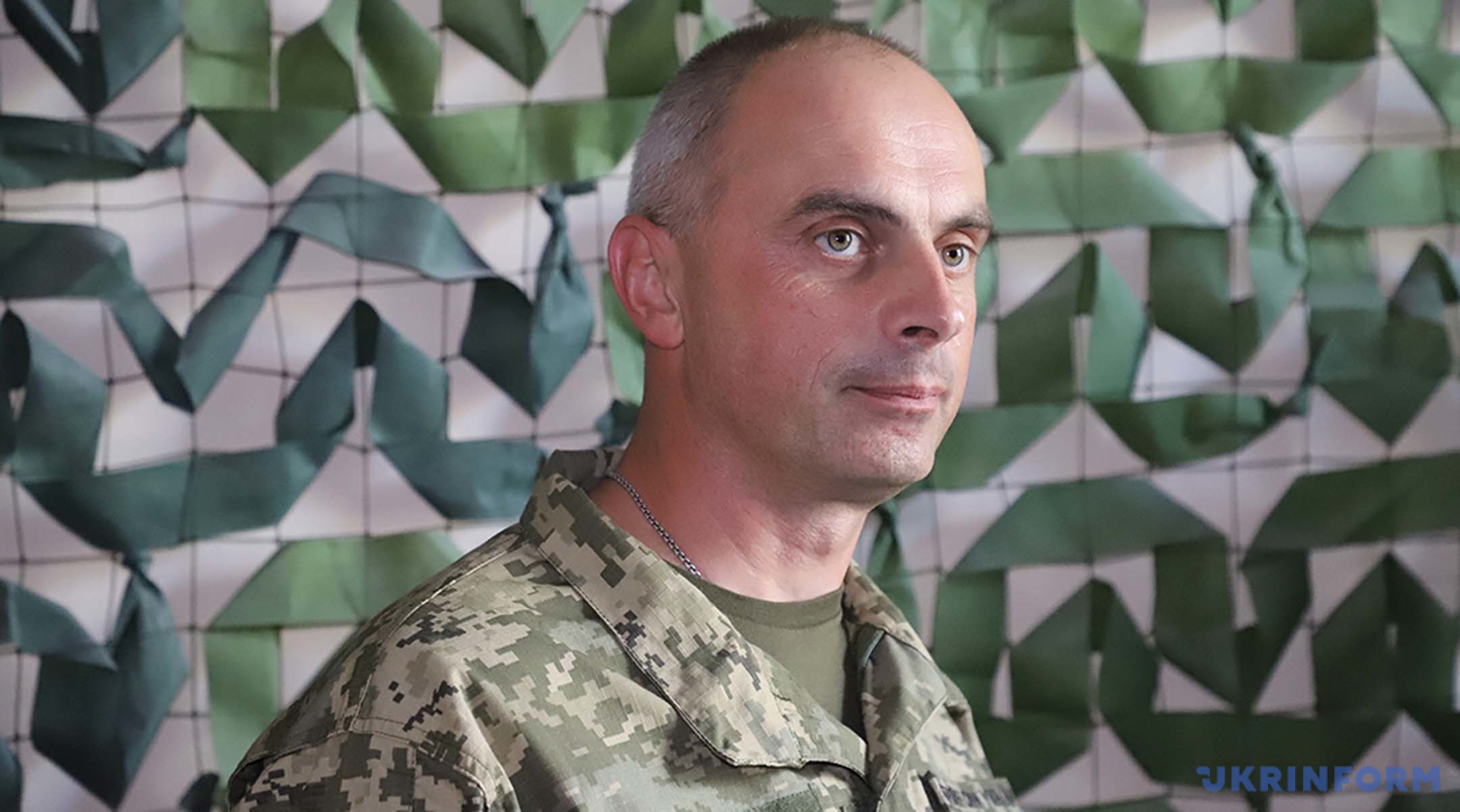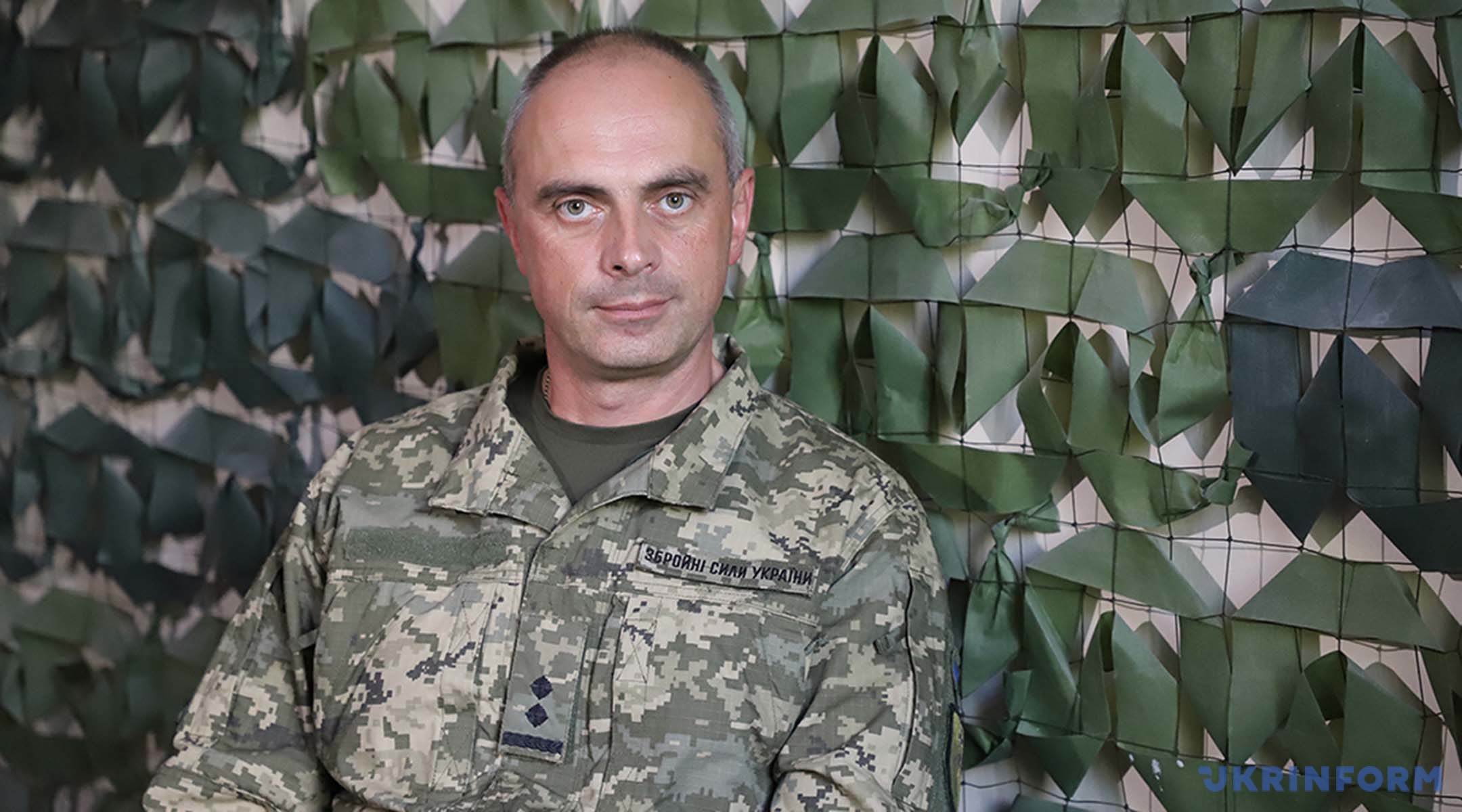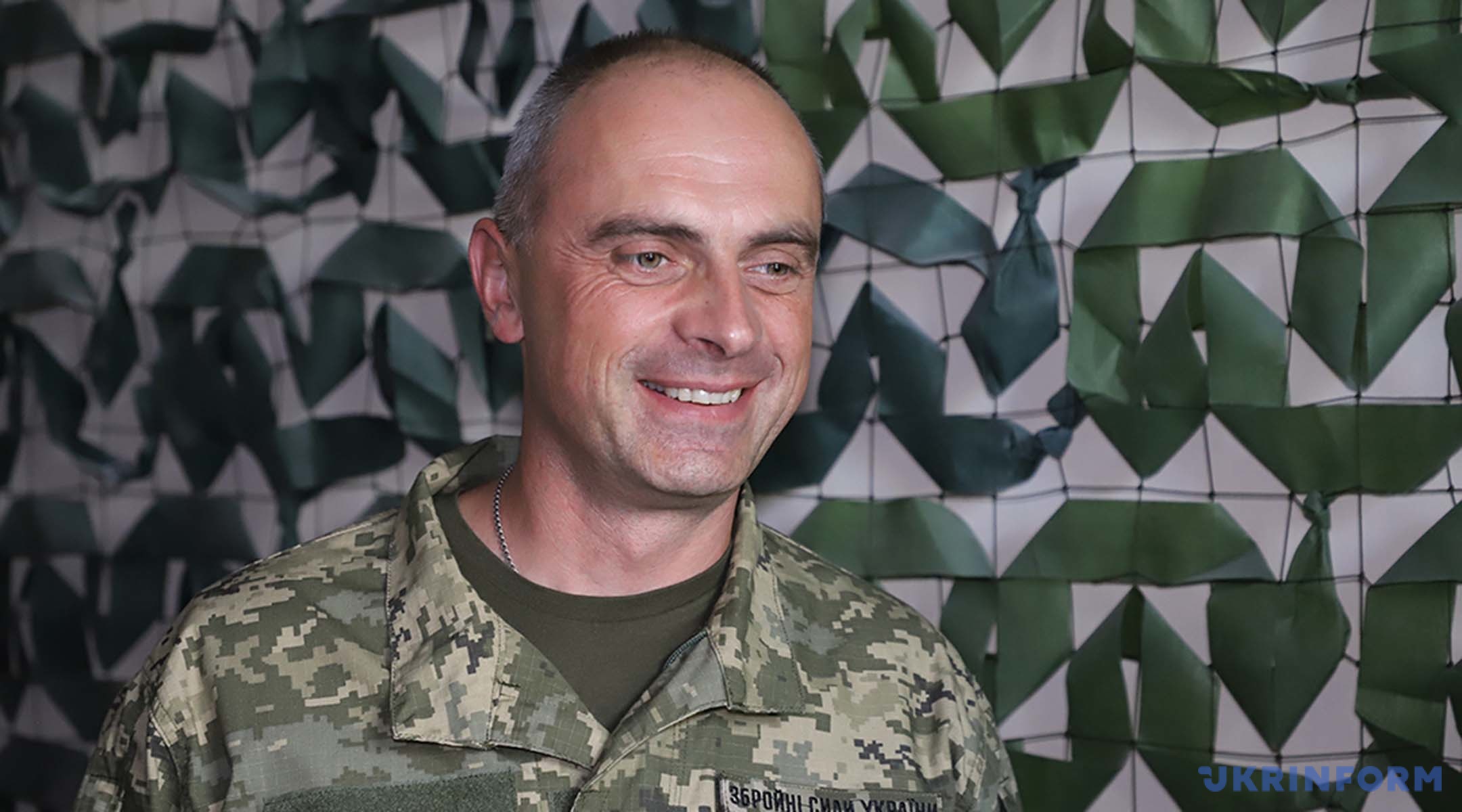Radar Troops is a branch of the Ukrainian Air Force. Often referred to as "celestial eyes", Radar Troops are the first to see aerial threats. They work 24/7, whatever the weather.
Are there aerial targets that are difficult or impossible to detect? Volodymyr, an officer with the Bohdan Khmelnytsky Radar Brigade, in an interview for Ukrinform, was commenting on what weapons the enemy uses for attacks on our radar stations, and how their protection is ensured.

THERE ARE MANY WANTING TO SERVE IN THE RADAR TROOPS
- What tasks are assigned to the Radar Troops?
- Radar Troops serve as a prime source of air situational awareness information. The tasks assigned to combat units of the Radar Troops include radar reconnaissance of the airspace, detection and tracking of aerial threats, and around-the-clock provision of radar information to command and control staffs.
- How favored is service with Radar Troops now?
- From my perspective, it is highly favored, indeed. There are many wanting to serve in this military branch.
- What positions in your service remain vacant?
- These are job vacancies for professionals specific to radar troops. On top of that, as in civilian life, there are also vacancies for drivers, diesel electricians, etc.
- Do women serve in the Radar Troops?
- Yes, of course. In our radar team, in particular, female service members account for up to 10 percent of all personnel, performing all the tasks equally with men, not only in positions commonly considered “female-predominant”, such as cooks, doctors, etc., but also operators at radar stations. And they do their job very well.
- What jobs are favored most among Radar Troops?
- All jobs are needed. There are military jobs tailored specifically to Radar Troops: these are radar operators, command and control personnel, communication equipment operators, who all shall be subject to specialized training. There are jobs for security guard snipers, who are responsible for guarding the security of our units. Newcomers choose jobs for themselves according to training they had received in civilian life. Civilian drivers, for example, usually opt for driving jobs when in the military.
- How much time does it take to train a professional for the Radar Troops?
- I estimate its takes about a year to train a top-class specialist to serve with the Radar Troops, since they will have to deal with very sophisticated equipment and systems.

THE ADVERSARY NEVER STOPS HUNTING FOR OUR RADAR STATIONS
- How to detect a target in the air?
- Operators at radar stations search out air targets, determine their characteristics and provide the target data to the unit’s command post at the deployed site. After the data is gathered, processed and recorded, it is shared to a Battalion command post, then to a Brigade command post and higher on along the command and control hierarchy. The data also goes to Air Defense Missile command centers, as well as fighter aircraft crews to support their combat missions.
- If I understand properly, these radar stations are deployed in the open and are not physically protected. Does it make them an easy target for the enemy to spot and destroy?
- Indeed, they are pretty big and visible. The enemy is continuously hunting for our stations, so we take measures to protect both personnel and the equipment. We maneuver, use camouflage measures, set up false positions, and so on.
- With what weapons does the adversary attack the radar stations most often?
- With Lancet loitering munitions, Kh-31P, Kh-35, and Kh-59/69 cruise missiles.
- There are lots of Telegram channels that report a threat at an earlier time than the Air Force. Where do they get information from?
- I cannot say where the information reported by those telegram channels comes from. We don't know. The Air Force has its official accounts on Telegram and WhatsApp.
OUR RADAR STATIONS ARE EFECTIVE AGAINST ALL WEAPONS OF ATTACK THE ADVERSARY HAS IN ACTIVE SERVICE
- How does the weather affect the detection of targets?
- Indeed, the detection of aerial targets is complicated to a degree by the presence of weather formations. But with the high-quality training of radar crews and command post personnel, who can properly choose the mode of operation, pick a specific station to detect specific aerial targets, this job is done, whatever the weather, time of day or year.
- Can you detect every threat?
- Our radar stations are capable of detecting all weapons of attack the enemy has in active service, ranging from low-altitude high-speed targets such as cruise missiles to unmanned aerial vehicles that can fly at extremely low to medium altitudes. We also can detect ballistic missile threats.
- Which of these targets are most difficult to detect, track, and destroy?
- Those that can fly at extremely low altitudes, maneuver all the way down to target, have low radar cross-section that makes them more difficult to detect by radar. Ballistic missiles are also difficult to detect due to their high speed flight, consequently a very short time they stay within the radar’s field of view. But that notwithstanding, we still can detect them.
- During two and a half years of the full-scale war, have our troops learned how to defeat these targets more effectively?
- Yes, indeed. There has been achieved a significant progress in the detection and tracking of aerial threats. Combat crews have learned how to recognize and identify aerial targets and to unravel the enemy’s tactics of using weapons of attack. Accordingly, they know how to act in this or that situation. For us this is commonplace.

OUR RADAR BRIGADE DETECTS AND TRACKS AN AVERAGE OF 700-900 AERIAL THREATS EVERY DAY
- What targets are the easiest to detect?
- Large aircraft, bombers, Su-35 and Su-34 jets flying at high altitudes. We can see them very well.
- What’s the number of aerial targets the Radar Troops detect per day on average?
- I cannot speak for all of the Radar Troops, but our Radar Brigade searches out and tracks an average of 700-900 aerial threats every day. Approximately half of them are airplanes flying over Russia without entering our airspace. The remainder are hostile aircraft flying over Ukraine, as well as cruise missiles, UAVs and MLRS rockets.
- The adversary is upgrading and improving its equipment. How does this complicate the Radar Troops’ operations?
- The adversary does not stand still; it is continuously upgrading and improving its weapons capabilities, updating the tactics of using weapons of attack. It has multiplied by many times the number of its reconnaissance UAVs deployed at the frontline. There has been a shift in how the enemy uses its Shakhed strike UAVs. Now they can maneuver from extremely low to high altitudes, can change their trajectory while in-flight. The enemy began using ballistic missiles allied to reconnaissance drones. There has been more frequent use of Su-57 fighter jets, which are carriers of the cruise missiles Kh-59 and Kh-69.
THE TIME NEEDED FOR A RADAR UNIT TO SHIFT FROM TRAVEL TO DEPLOYED MODE HAS BEEN REDUCED TWO TO THREE-FOLD
- Do the Radar Troops have a requirement for more personnel or equipment?
- The war is ongoing. Therefore there is always a requirement for personnel and equipment. Looking into the future, we want our key radar assets to get better battlefield mobility, so that to minimize the time needed for a unit to shift from travel to deployed mode and backward.
- How much time does it currently take?
- I we look at the specifications as stated by the manufacturers, this time is set at 45 minutes. But we have been able to get this time reduced two to three-fold, this achieved thanks to the knowledge and experience of our engineers and combat service personnel. Some of new Western technologies in this category offer a set-up time of just five minutes or less.
SOME 60 PERCENT OF THE WEAPONRY AND EQUIPMENT IN THE BRIGADE’S INVENTORY ARE OF UKRAINIAN MAKE
- What’s the make of the weaponry and equipment in the Radar Troops’ inventory? Ukrainian or Western?
- In our Radar Brigade, 60 percent of the weapons and equipment used are of Ukrainian make. These are either new technologies or ones left behind from Soviet army stocks, improved and upgraded.
- Does Ukraine manufacture weaponry and equipment for its Radar Troops?
- Yes, that’s so. Ukrainian arm industries, both in pre-war times and today remain among the world’s front-runners in radar technologies, continuously developing and improving their knowledge and expertise. If our partners decide to give us their technologies, I see no reason why shouldn’t take them, we will train on them as well.
- How do the Radar Troops personnel improve their skills and proficiency?
- You know, at the beginning of the full-scale invasion we were in a little bit of a shock, even though we were preparing for a war. Our units were already deployed and waiting. The first attacks began. When I toured our units, I saw how people were working to exhaustion in stressful conditions. Some were fearful, others did not perform their work well enough. Then everything happened for the first time: our units were coming under Lancet drone and cruise missile attacks. But people were learning how to overcome fear and hardships. Our soldiers are now well- trained, have gained unique combat experience. They know how to maneuver better, how to deploy a radar station, how to identify a target and transmit information. They have got accustomed to working in the fields in different weathers. They have also learned how to restore out-of-commission or damaged equipment back to service. We have a highly skilled, well-trained staff of engineers and technicians, who can get to the site at any time of the day or night in any weather and put even a heavily damaged or broken vehicle back into proper operating condition. It may be that Ukraine currently has perhaps the best military with the best soldiers. Therefore, we will definitely prevail in this war!
Hanna Bodrova, Odesa
